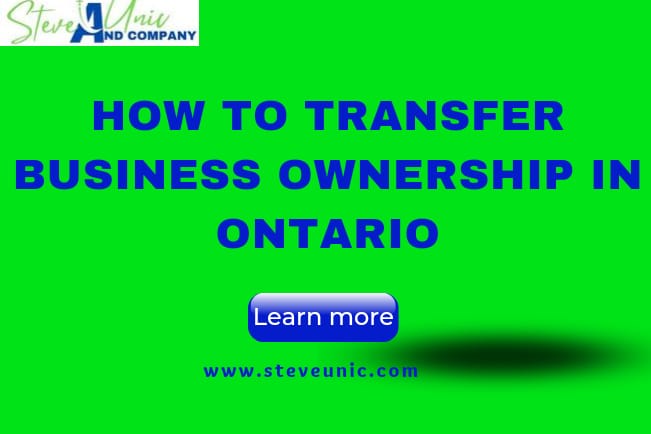

Do you want to buy a house and seek to use a secure exchange that will protect your interest? This is where escrow comes to play. This article will walk you through how escrow work when buying a house. This article contains all the information you need on this premise.
Buying a house can be complicated, including payment methods, especially when you want to pay off the house gradually. Escrow is a crucial component of the transaction process when buying a house. It is a financial arrangement where a neutral third party holds and manages funds, documents, and other assets related to the real estate transaction on behalf of the buyer and seller. The primary purpose of escrow is to ensure a secure and transparent exchange, protecting both parties during the buying and selling process.
Let’s look at the eight steps on how escrow work when buying a house:
Disclosure: My site is reader-supported. I may get commissions when you click through the affiliate links (that are great products I use and stand by) on my articles.

How Does Escrow Work When Buying A House
- Do you want to buy a house and seek to use a secure exchange that will protect your interest? This is where escrow comes to play.
- This article will walk you through how escrow work when buying a house. This article contains all the information you need on this premise.
How Does Escrow Work When Buying A House – 8 Steps

Step 1: Opening Escrow
Opening escrow is the pivotal step in a real estate transaction, and it involves the involvement of a neutral third party, typically an escrow officer or a title company. The opening of escrow marks the beginning of the formal process to facilitate the property transfer. You must have accepted the offer of the building before proceeding to open an escrow.
With the seller’s approval, you or the real estate agent selects an escrow agent or a title company to handle the transaction. This choice is essential, as the selected agent will oversee the escrow process, ensure all documents and funds are handled correctly, and provide a secure environment for the transaction.
You will be required to provide an earnest money deposit that demonstrates your commitment to purchasing the property. The earnest money is typically specified in the purchase agreement and held in the escrow account.
Step 2: Inspections and Contingencies
Inspections and contingencies are essential as it helps to safeguard you and help you make informed decisions about the property you intend to purchase. Let’s look at what inspections and contingencies entails.
Home inspections are a crucial part of the due diligence process that allows you to assess the property’s condition. It is advised that you hire a professional home inspector to comprehensively examine the home’s structure, systems, and components. Common inspections include the following:
The overall condition of the property, including the foundation, roof, plumbing, electrical systems, heating, ventilation, air conditioning (HVAC), and more.
- Sewer line inspection
- Lead paint testing
- Well and septic inspections
- Pest inspection
- Radon Inspection:
After the inspections are completed, you will receive a report detailing the inspector’s findings. You can negotiate with the seller on any issues discovered during the inspection. You may withdraw from the deal if significant problems are found.
On the other hand, contingencies are conditions stated in the purchase agreement that must be fulfilled for the sale to proceed. They provide specific rights and options, allowing you to exit the contract under certain circumstances without forfeiting their earnest money. Common contingencies include:
- Financing Contingency: This contingency allows you to back out of the deal if they cannot secure a mortgage or loan to purchase the property.
- Appraisal Contingency: This contingency allows you to withdraw from the contract if the property’s appraised value is lower than the agreed-upon purchase price after inspection.
- Home Inspection Contingency: You can use this contingency to renegotiate or request repairs based on the home inspection report.
- Title Contingency: This contingency ensures you will receive a clear title to the property. If title issues cannot be resolved, you can cancel the contract.
Step 3: Title Search and Insurance

Title search and title insurance are critical components of a real estate transaction that help ensure you receive a clear and marketable title to the property. A title search entails a comprehensive examination of public records to authenticate the property’s ownership history and determine if any claims, liens, or encumbrances could affect the ownership transfer process. A title company or a real estate attorney usually performs the title search.
On the other hand, title insurance is a policy that protects you and the lender (if applicable) from financial losses arising from title defects or disputes not found during the title search. Title insurance provides peace of mind to the buyer by offering protection against title defects discovered during the title search, such as forged documents, undisclosed heirs with claims to the property, or mistakes in public records.
Step 4: Mortgage Approval and Appraisal
Mortgage approval and appraisal are essential steps in home buying, especially when the buyer is financing the property purchase with a mortgage loan. In seeking mortgage approval, the lender assesses your creditworthiness, income, debts, and other financial factors to ensure you can repay the mortgage.
While an appraisal is an independent assessment of the property’s market value conducted by a licensed appraiser. The lender orders the appraisal as part of the mortgage approval process. Its purpose is to ensure the property’s value justifies the loan amount.
Both mortgage approval and appraisal are significant milestones in the home-buying process. Mortgage approval ensures that the buyer qualifies for the necessary financing. At the same time, the appraisal confirms the property’s value, assuring the lender and the buyer that the investment is sound.
Step 5: Closing Documents

Closing documents are a collection of legal paperwork that must be signed and executed by both the buyer and seller during the closing process of a real estate transaction. The closing, also known as the settlement, is the final step in the home-buying process, where property ownership officially transfers from the seller to the buyer. The closing documents are prepared by the escrow officer, title company, or closing attorney, and they typically include the following:
- Closing Disclosure (CD): This document provides a detailed breakdown of the final costs and fees associated with the transaction. It includes the loan amount, interest rate, closing costs, prorated taxes, insurance premiums, and other financial details.
- Promissory Note: If the buyer obtains a mortgage, they sign a promissory note, a legal promise to repay the loan according to the terms specified, including the loan amount, interest rate, and repayment schedule.
- Deed: The seller signs the deed, a legal document that transfers ownership of the building from the seller to the buyer. The type of deed used can vary depending on the state and specific transaction circumstances.
- Bill of Sale: If there are any personal property items (e.g., appliances, furniture) included in the sale, a bill of sale may be included to transfer ownership of these items from the seller to the buyer.
- Affidavits: Various affidavits may be required during the closing process. For example, the seller often provides an affidavit of title, affirming that they have a clear title.
- Certificate of Occupancy (CO): In some areas, a certificate of occupancy may be required to confirm that the property fulfills the local building codes and is suitable for occupancy.
- Title Insurance Policies: If applicable, the buyer and lender (if a mortgage is involved) receive their respective title insurance policies. These policies protect against future claims or disputes regarding the property’s title.
- Loan Documents: If the buyer obtains a mortgage, they will sign various loan documents provided by the lender. These may include the mortgage agreement, notes, and other disclosures the lender requires.
- Proration Statements: The closing documents may include proration statements for property taxes, homeowner association fees, and other expenses to ensure that both parties pay their fair share of these costs up to the closing date.
- Escrow Agreement: If an escrow agent or title company is involved in the transaction, an escrow agreement may be signed to outline the terms of the escrow service and the disbursement of funds.

How Does Escrow Work When Buying A House
- Do you want to buy a house and seek to use a secure exchange that will protect your interest? This is where escrow comes to play.
- This article will walk you through how escrow work when buying a house. This article contains all the information you need on this premise.
Step 6: Funding

In this step, all the deal’s financial aspects are settled, including the payment to the seller and the distribution of funds to cover various expenses.
Once all the necessary funds have been collected and verified and all required documents have been signed, the escrow officer or title company disburses the funds accordingly.
Step 7: Title Transfer and Recording
Title transfer and recording are the final steps in a real estate transaction that formally transfer ownership to the buyer and make the change of ownership a matter of public record. These steps involve legally transferring the property’s title to the buyer and recording the deed with the appropriate government office.
After the deed has been signed, it needs to be recorded with the appropriate government office, typically the county recorder’s office or the registrar of deeds.
Step 8: Closing Escrow
Closing escrow, also known as the settlement or completion of the real estate transaction, is the final step in the home-buying process. It occurs after all the conditions and requirements outlined in the purchase agreement have been fulfilled, all funds have been collected and disbursed, and all the closing documents have been signed.
During the closing meeting, the buyer and seller review and sign the closing documents. These documents include the deed, mortgage, or promissory note (if the buyer is obtaining a mortgage), the Closing Disclosure (CD), title insurance policies (if applicable), and any other necessary paperwork related to the transaction.
At the closing, the escrow officer or title company disburses the funds collected during the transaction. This includes the buyer’s down payment, the mortgage funds from the lender (if applicable), and any other funds necessary to cover closing costs, fees, and expenses.
Also, all closing costs and fees are settled. These may include title insurance premiums, escrow fees, real estate commissions, transfer taxes, recording fees, and any other expenses associated with the transaction.
Escrow Accounts for Homeowners
Escrow accounts for homeowners, also known as impound accounts, are specialized accounts set up by lenders to hold funds on behalf of homeowners to cover certain recurring expenses related to the property. The primary purpose of these accounts is to ensure that essential payments, such as property taxes and homeowner’s insurance, are made on time, providing financial protection for the homeowner and the lender.
Escrow accounts for homeowners provide several benefits, such as:
- Simplified Budgeting
- Financial Security
- Lender’s Protection
People Also Ask:
How Long Do You Pay Escrow on a Mortgage?
The duration for which you pay escrow on a mortgage varies, depending on the type of mortgage loan you have and the specific terms of your loan agreement. Escrow accounts are set up to cover certain recurring expenses related to the property, such as property taxes, homeowner’s insurance, and sometimes mortgage insurance. The primary purpose of an escrow account is to ensure that the essential expenses are paid as when due.
What Is the Purpose of Having a Mortgage Escrow?
The purpose is to set aside funds to cover certain recurring expenses related to the property, such as property taxes, homeowner’s insurance, and, in some cases, mortgage insurance. An escrow account, also called an impound account, acts as a financial safeguard for the lender and the borrower by ensuring that these essential expenses are paid on time, and the property is protected.
Do You Get Your Escrow Money Back?
Yes, you can get your escrow money back under certain circumstances. An escrow account is set up to hold funds for specific purposes, such as paying property taxes, homeowner’s insurance, and, in some cases, mortgage insurance. If there are surplus funds in your escrow account, you may be eligible to receive a refund or a check for the excess amount.

How Does Escrow Work When Buying A House
- Do you want to buy a house and seek to use a secure exchange that will protect your interest? This is where escrow comes to play.
- This article will walk you through how escrow work when buying a house. This article contains all the information you need on this premise.
Conclusion
Escrow accounts work when buying a house to protect both parties in real estate transactions. They ensure that essential expenses are paid on time, providing financial security for both parties.
Overall, escrow accounts are crucial in maintaining the property’s stability and the real estate transaction.






